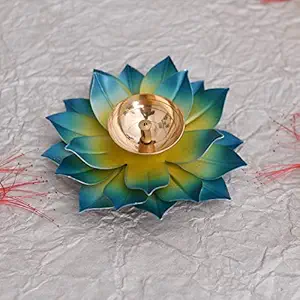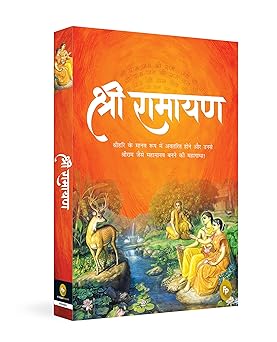परिचय
भगवान राम और माता सीता का विवाह एक पवित्र घटना है, जिसे रामायण में विस्तार से वर्णित किया गया है। सीता स्वयंवर में भगवान राम द्वारा शिवजी के धनुष को तोड़ने के बाद, राजा जनक ने बड़े हर्षोल्लास से विवाह समारोह की तैयारियां कीं। यह विवाह केवल राम और सीता का नहीं था, बल्कि राम के तीनों भाइयों – लक्ष्मण, भरत और शत्रुघ्न – के विवाह भी इस शुभ अवसर पर संपन्न हुए।
विवाह की भव्य तैयारियां
राम के विजयी होने के बाद, राजा जनक ने अयोध्या में राजा दशरथ को यह शुभ समाचार भेजा। दशरथ अत्यंत प्रसन्न हुए और अपने परिवार तथा अयोध्यावासियों के साथ मिथिला पहुंचे। विवाह समारोह अत्यंत भव्य रूप से आयोजित किया गया, जिसमें ऋषि-मुनियों, राजाओं और देवताओं को आमंत्रित किया गया।
विवाह समारोह
वैदिक मंत्रों और शुभ आशीर्वादों के बीच यह दिव्य विवाह संपन्न हुआ। भगवान राम और माता सीता ने अग्नि के चारों ओर सात पवित्र फेरे लिए और एक-दूसरे को धर्म और प्रेम का वचन दिया।
इसी अवसर पर, लक्ष्मण का विवाह उर्मिला (सीता की छोटी बहन) से, भरत का विवाह मांडवी से, और शत्रुघ्न का विवाह श्रुतकीर्ति से हुआ (ये दोनों जनक के भाई कुशध्वज की पुत्रियाँ थीं)। यह विवाह दो राजवंशों के बीच संबंधों को मजबूत करने वाला सिद्ध हुआ।
विवाह का महत्व
-
दिव्य प्रेम का प्रतीक – यह विवाह भगवान राम और माता सीता के शुद्ध प्रेम को दर्शाता है।
-
धर्म और भक्ति का संगम – विवाह में धार्मिक आदर्शों और कर्तव्यों का सुंदर समावेश किया गया।
-
आदर्श विवाह का उदाहरण – राम और सीता का दांपत्य जीवन विश्वास, निष्ठा और धर्मपरायणता का प्रतीक है।
विवाह उपरांत, सभी नवविवाहित दंपती राजा दशरथ के साथ अयोध्या लौटे, जहाँ पूरे नगर में हर्षोल्लास के साथ उनका स्वागत किया गया।
Introduction
Overview of the Event
This story narrates the marriage of Lord Rama and Sita, marking an important event in the Ramayana.
Significance
The event symbolizes devotion, love, dharma, and righteousness in relationships.
Main Characters
Key figures include Lord Rama, Sita, Lakshmana, King Janaka, and other family members.
Setting
The events take place in Mithila during the great ceremony and celebrations of the royal court.
Marriage Ceremony
Rituals Performed
The marriage includes traditional rituals, vows, and ceremonies that follow dharma and customs.
Family Participation
Family members and royal dignitaries actively participate in the ceremonies and celebrations.
Significance of Rituals
The rituals symbolize unity, purity, and the sanctity of marriage as per dharma.
Cultural Importance
The event reflects the cultural traditions and social practices of the time.
Lessons
The ceremonies teach respect for traditions, devotion, and moral living.
Role of Sita
Sita’s Virtues
Sita demonstrates humility, devotion, and loyalty, setting an example for moral conduct.
Devotion to Rama
Her love and dedication to Rama highlight the power of devotion and virtue.
Symbol of Purity
Sita represents purity, grace, and adherence to dharma in her actions.
Influence on Society
Her example inspires moral living and devotion among the people.
Lessons
Sita teaches patience, loyalty, and adherence to righteousness.
Rama’s Role
Rama’s Virtues
Rama demonstrates honor, humility, courage, and adherence to dharma in his conduct.
Respect and Duty
He shows respect for elders, duties to family, and moral responsibility.
Symbol of Dharma
Rama’s actions symbolize righteousness and ethical living for all devotees.
Lessons
Rama teaches courage, moral integrity, and devotion to duty.
Lessons from the Marriage
Family Values
The event highlights family unity, respect, and adherence to societal duties.
Love and Devotion
The story emphasizes love, loyalty, and devotion between husband and wife.
Importance of Righteousness
It teaches that all actions in life, including marriage, should follow dharma.
Social Significance
The marriage reflects cultural traditions, social responsibilities, and ethical conduct.
Spiritual Lessons
It inspires devotion, moral values, and righteous living in all aspects of life.
This story narrates the marriage of Lord Rama and Sita, marking an important event in the Ramayana.
The event symbolizes devotion, love, dharma, and righteousness in relationships.
Key figures include Lord Rama, Sita, Lakshmana, King Janaka, and other family members.
The events take place in Mithila during the great ceremony and celebrations of the royal court.
The marriage includes traditional rituals, vows, and ceremonies that follow dharma and customs.
Family members and royal dignitaries actively participate in the ceremonies and celebrations.
The rituals symbolize unity, purity, and the sanctity of marriage as per dharma.
The event reflects the cultural traditions and social practices of the time.
The ceremonies teach respect for traditions, devotion, and moral living.
Sita demonstrates humility, devotion, and loyalty, setting an example for moral conduct.
Her love and dedication to Rama highlight the power of devotion and virtue.
Sita represents purity, grace, and adherence to dharma in her actions.
Her example inspires moral living and devotion among the people.
Sita teaches patience, loyalty, and adherence to righteousness.
Rama demonstrates honor, humility, courage, and adherence to dharma in his conduct.
He shows respect for elders, duties to family, and moral responsibility.
Rama’s actions symbolize righteousness and ethical living for all devotees.
Rama teaches courage, moral integrity, and devotion to duty.
The event highlights family unity, respect, and adherence to societal duties.
The story emphasizes love, loyalty, and devotion between husband and wife.
It teaches that all actions in life, including marriage, should follow dharma.
The marriage reflects cultural traditions, social responsibilities, and ethical conduct.
It inspires devotion, moral values, and righteous living in all aspects of life.


